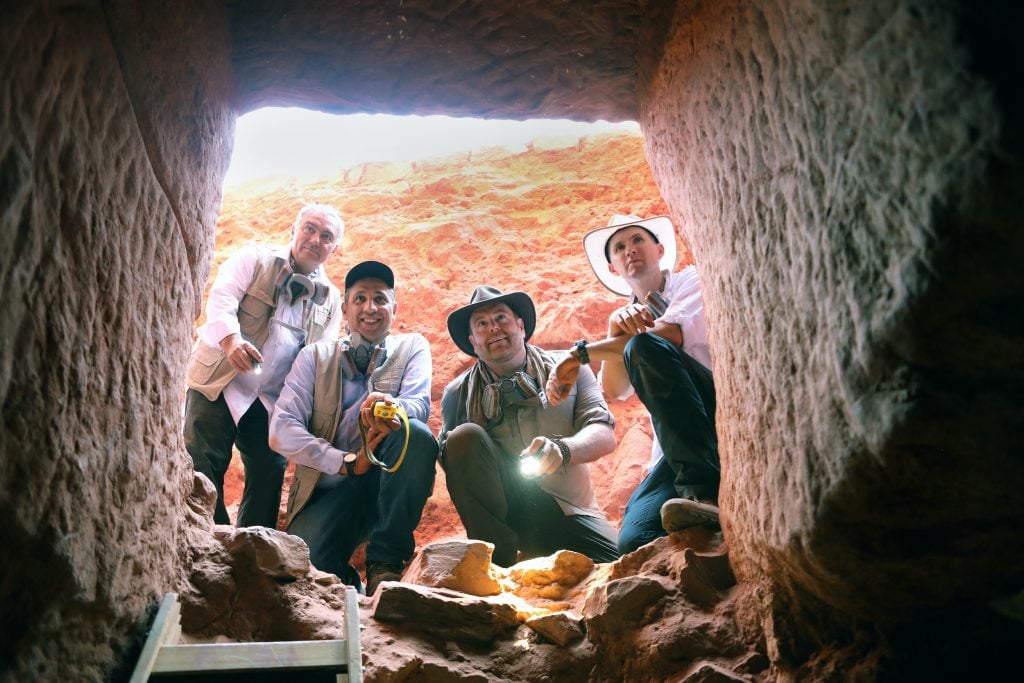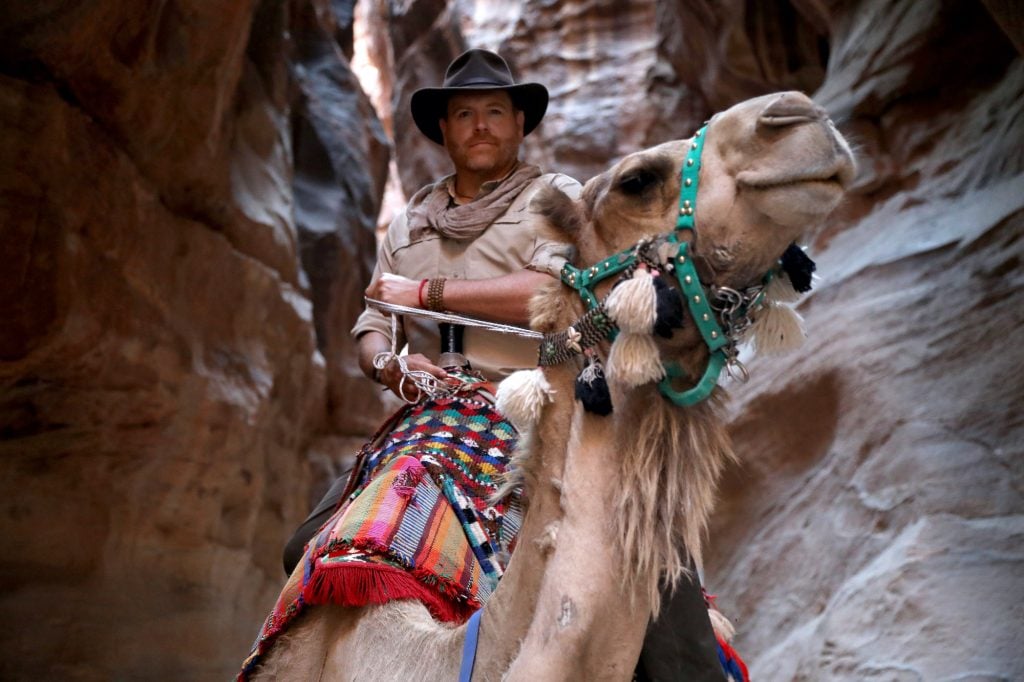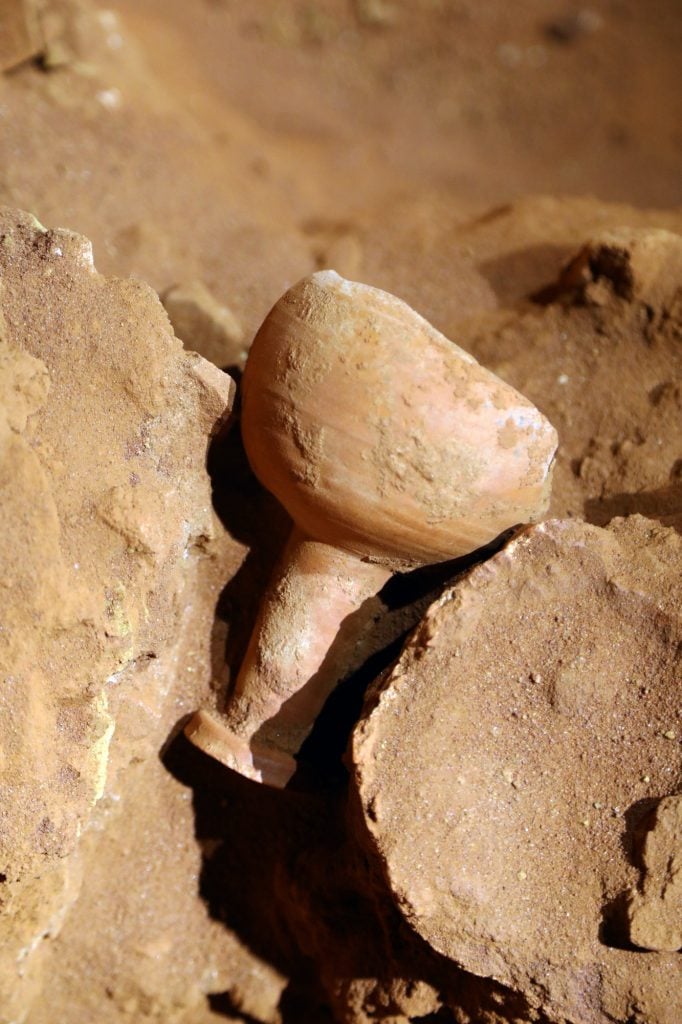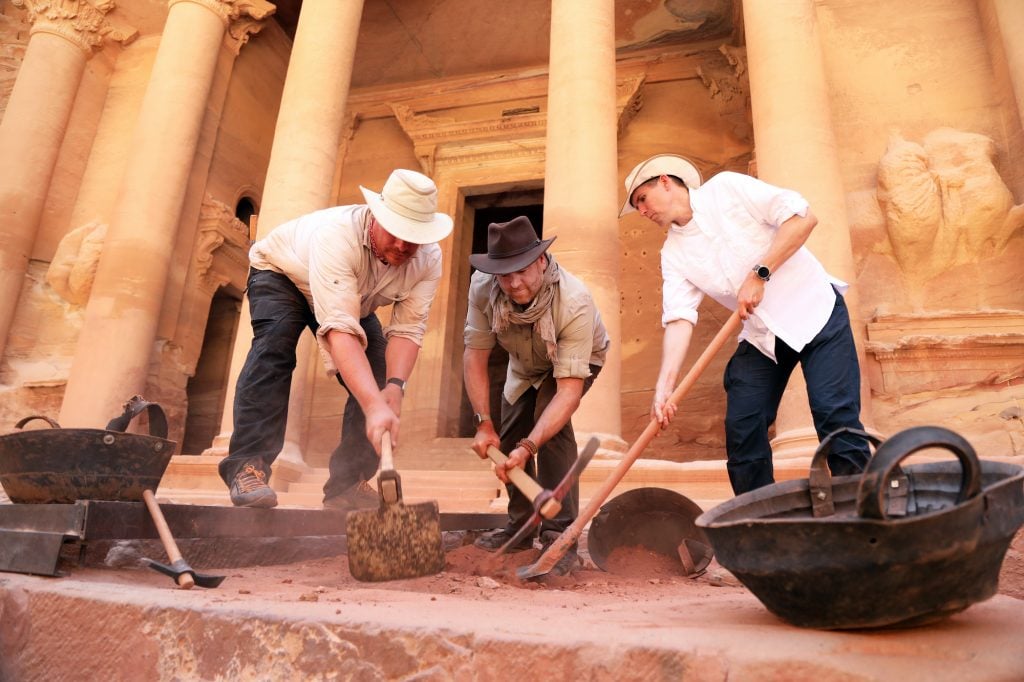Archaeology & History
2,000-Year-Old Tomb Found Beneath ‘Indiana Jones’ Filming Location in Petra
The ancient site in Petra contained 12 intact skeletons.

The ancient site in Petra contained 12 intact skeletons.

Verity Babbs

An intact tomb containing at least 12 skeletons and burial artifacts from the Nabataean civilization has been found underneath Petra’s Treasury. The discovery was made by a team led by the American Center of Research’s executive director, Dr. Pearce Paul Creasman.
The tomb is believed to be at least 2,000 years old, created by the Nabataeans who lived in the region (and are presumed to have held Petra—then called Raqmu—as their capital) between the 4th and 2nd centuries B.C.E. It was the Nabataeans who constructed Petra in the 3rd century B.C.E., carving a complex city including temples and tombs directly into the sandstone cliffs. It was named one of the New Seven Wonders of the World in 2007 and is nicknamed the “Rose City” after its characteristic pink color.
The discovery of the tomb is being considered a breakthrough for research into the Nabataean nomadic culture, especially into their mysterious burial practices. Due to a lack of knowledge around these ancient customs, researchers are not sure which members of Nabataean society might have been buried in such a tomb.

‘Expedition Unknown’ host Josh Gates at the entrance to Petra. Photo Credit: Discovery’s Expedition Unknown
Petra’s Treasury, called Al-Khazneh, is one of the most famous areas of the city and is now a major tourist site. It is believed to have been created as a mausoleum, although its exact purpose has never truly been pinned down.
It is unusual to find tombs of this age that have not been looted, but the one excavated in August by Creasman’s team was entirely undisturbed. It still contained human remains, as well as iron and bronze items.
The site was initially pinpointed as potentially of interest after two tombs were found beneath the ancient site in 2003. Ground-penetrating radar was used to locate possibility of additional tombs. These discoveries were taken to the Jordanian government in order to obtain the go-ahead to commence with a dig at the site.

Ancient ceramic resembling the Holy Grail discovered in a tomb beneath The Treasury of Petra. Photo Credit: Discovery’s Expedition Unknown
Petra was used as a filming location for Steven Spielberg’s 1989 “Indiana Jones and the Last Crusade”. The franchise stars Harrison Ford as an adventurous (and amorous) archaeologist, and its latest instalment came in 2023, 41 years after the first movie. The Treasury hosted one of the most iconic scenes from “the Last Crusade”, when Jones and his father (played by Sean Connery) discover the Holy Grail.
This wasn’t the only time cameras rolled into the Treasury, as Creasman brought a film crew with him to record the excavations made this August. Footage was shown on the Discovery Channel’s “Expedition Unknown” on Wednesday—the first episode of the program’s 14th series. When one skeleton was revealed to have been holding a ceramic chalice, host Josh Gates called it an “awesome moment of history imitating art”.

Explorer Josh Gates and Professor Pearce Paul Creasman with archaeologist Matthew Vincent digging in front of the Treasury at Petra. Photo Credit: Discovery’s Expedition Unknown
Although the tomb was untouched, the humidity of the area, as well as flooding and trapped moisture held in Petra’s porous sandstone, have likely contributed to the decay of fabric artifacts that would have typically been found at a burial site of this nature.
Researchers seem positive that others tombs may be discovered at the ancient site, following the recent developments.